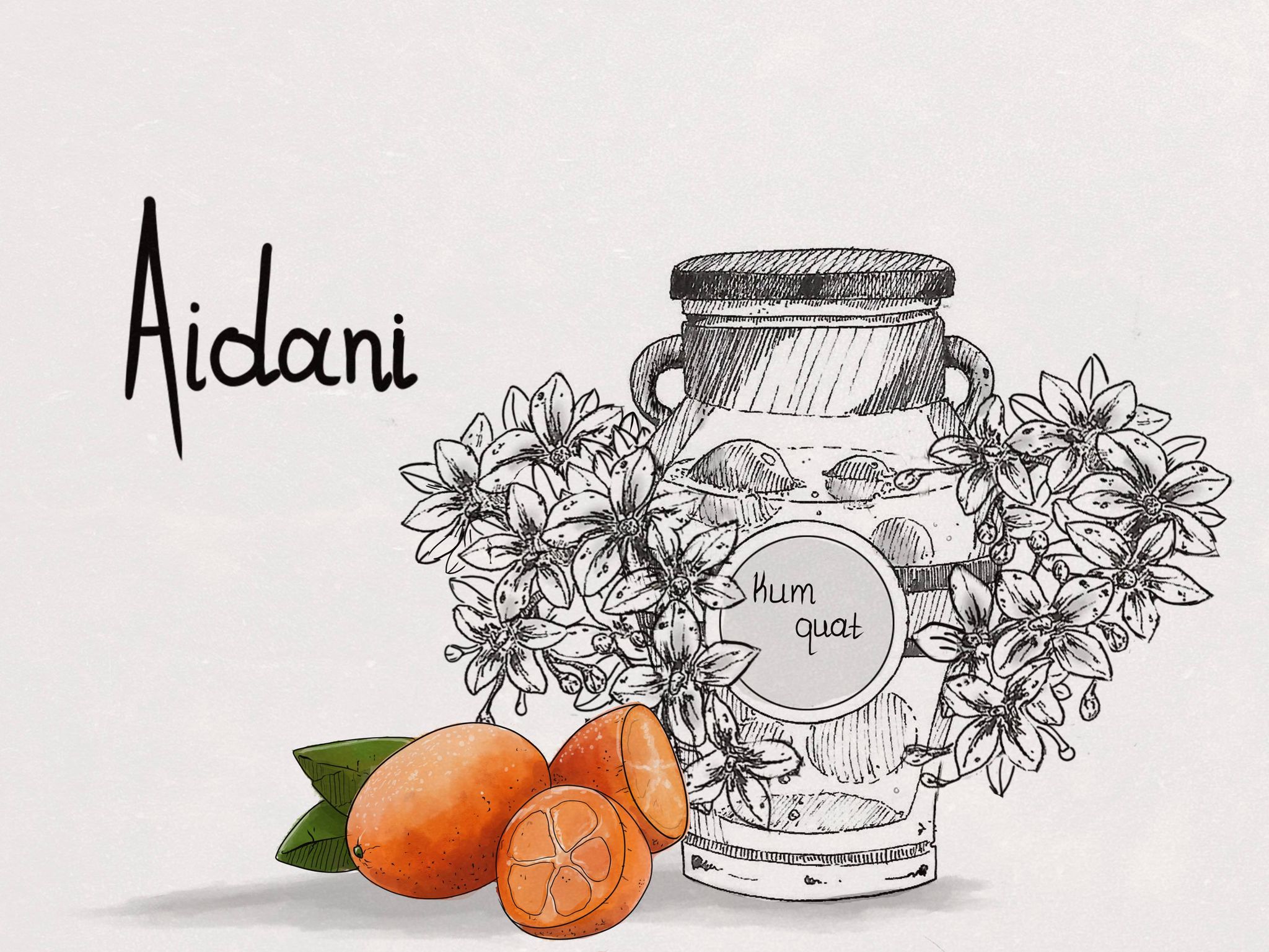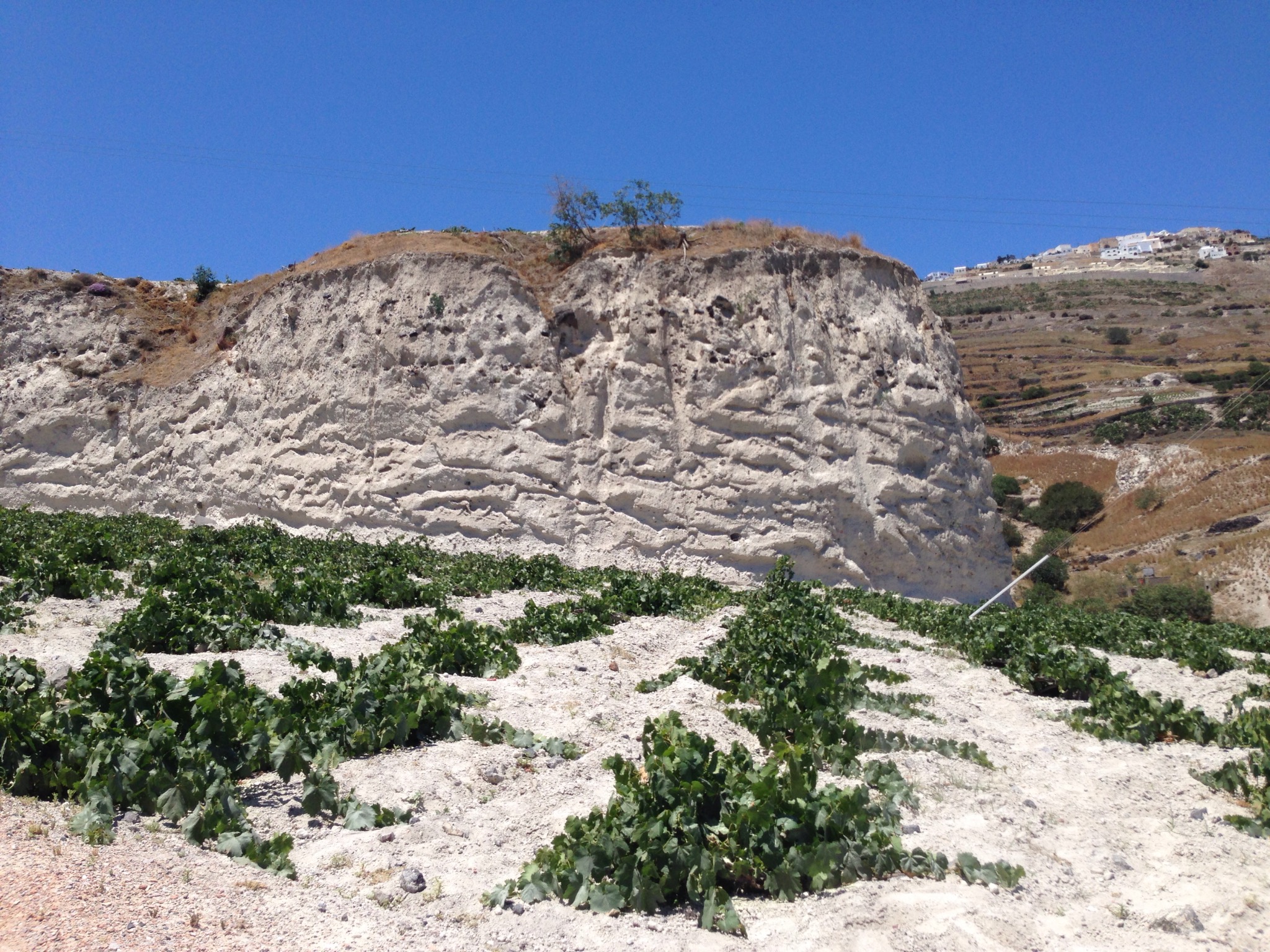
Aidani
By Yiannis Karakasis MW
In a nutshell
Aidani is a hidden gem of the Greek vineyard. One of the oldest varieties planted in all of the Aegean islands that is crunchy and perfumed (1). It ripens early and needs to be picked at just the right time, otherwise, the wine can be flabby. Six producers have a 100% varietal wine in their range, but it may also feature as up to 25% of the dry Santorini blend. For sweet Vinsanto, the percentage can be even higher.
Aidani is thought to have originated in the city of Adana (2), Southeast Turkey, but there is no genetic evidence to confirm this hypothesis. It covers 30 hectares of plantings on Santorini (3), which makes it a rarity, yet it is the second most planted white variety after Assyrtiko and is third in overall plantings, following the red Mandilaria. It is also planted in Paros, Naxos, Crete and parts of the Peloponnese.
Aromas and flavours
Producers using Aidani in their Vinsanto blend have long known that it is the antithesis of Assyrtiko, with intense aromas of jasmine, peach, kumquat and tropical fruits like lychees and melon. It has a more buttery texture, with much softer acidity. Iconic producer Paris Sigalas once described Assyrtiko as Alsace and Aidani, with its buttery richness, as being like Burgundy. Lefteris Anagnostou, winemaker at Karamolegos identifies a salty texture in some vintages.
In the vineyard
Aidani has pale green leaves, which are fragrant and smooth to the touch. Its thick skins can withstand the fierce winds of the summer, but it is sensitive to both mildews (downy and powdery) and potassium or magnesium imbalance.
Aidani is regarded as a productive variety, with bunches that can exceed two kilograms in weight according to Yiannis Papaeconomou (winemaker at Vassaltis) and yields of up to 35hl/ha, compared to 25hl/ha for Assyrtiko. Because of its thick skins, tannins need refinement and, for that, “there are two options”, says Paris Sigalas. “Either aim for better ripeness or age it in oak”.
Both Mathew Argyros and Lefteris Anagnostou concur that it is a demanding variety. It ripens unevenly, meaning pickers need to pass through the vineyard more than once to harvest grapes with optimum acidity, and ripens late (4) so must be harvested last (not easy when it is planted amongst other varieties).
According to Stavrakas ampelography it buds in mid-March (March 15-25), flowers in mid-May (May 15-20), veraison in late July and harvested in late August.
Styles and winemaking approaches
Argyros was the first to bottle a single varietal Aidani in 2003, with Sigalas also among the pioneers of the variety. There are two different approaches to vinification, resulting in either a fuller or more mineral style. Both paths (protective or oxidative) produce complex examples, although the riper and oxidative style presents challenges for those pursuing optimum balance. Either way, the terroir of Santorini leaves its characteristic fingerprint on the wines, above any varietal expression denoting a salty taste to the best examples.
In a recent tasting, these different styles could be identified in the samples tested. The riper style produced by Sigalas and Hatzidakis contrasts with the floral, mineral style produced by the rest of the wineries. Perhaps making Aidani with just a kiss of oak or some skin contact would produce even more compelling examples of the variety; unfortunately, there is too little planted to encourage experimentation.
Ageing Potential
Aidani is a first-class supporting act for Assyrtiko, even if it is yet to show superstar potential as a standalone variety. It can work well as an aperitif due to its aromatic, floral nature, which also makes it a versatile wine to match with food.
Five years appears to be a suitable ageing window, though as more producers show faith in the variety, we can expect more fine wines with scope for further evolution. My understanding is that Aidani needs high altitude to preserve its acidity and it would be interesting to see it cultivated in cooler sites at a higher elevation (5). Furthermore, the majority of vineyards dedicated to Aidani are relatively young (under 20 years), so it is perhaps too early to judge its full potential.
Food pairings
Top Sommelier Terry Kandylis' suggestion: melitzanosaláta (aubergine salad with parsley and onion)
What to taste
Check reviews here.
Notable producers
Argyros, Gavalas, Hatzidakis, Karamolegos, Vassaltis
--------------------------------------------------------------------------------------
1. Venetsanos, G. (2016) Traditional Wine Making in Santorini, Santorini: Venetsanos winery
2. Stavrakas, E, 2010, Ampelography, Athens: Zitis, pp:249
3. Numbers of plantings are according to Rural Economy Department of Thira, March 2020
4. Stavrakas, E. (2010) Ampelography, Athens: Zitis, pp:235
5. Interview with Apostolos Thymiopoulos, owner of Acroterra.




